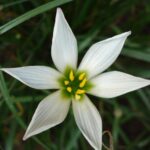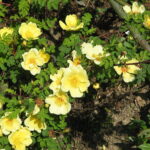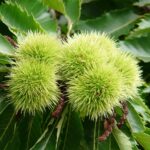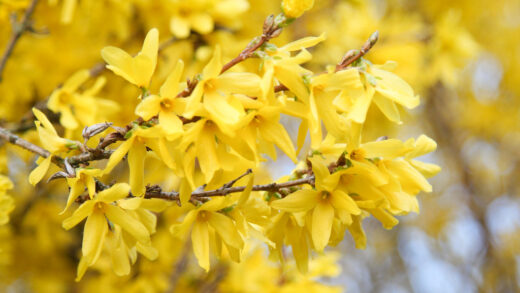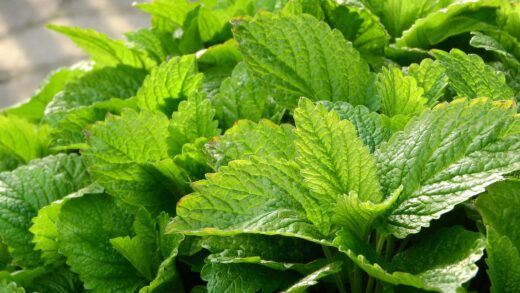The care of the Hosta

Hostas, beloved for their lush foliage and elegant forms, are a cornerstone of shade gardens around the world. These resilient perennials offer a vast array of colors, textures, and sizes, making them incredibly versatile for various landscape designs. Achieving a thriving Hosta display, however, requires a fundamental understanding of their specific needs and a consistent care routine throughout the growing season. From ensuring proper soil conditions to managing their moisture levels and nutritional requirements, attentive care is the key to unlocking their full potential. This guide provides a comprehensive overview of the essential practices that will help you cultivate healthy, vibrant, and stunning Hosta specimens in your own garden sanctuary.
Properly preparing the garden bed is the first critical step towards successful Hosta cultivation, as it lays the foundation for long-term plant health and vigor. Hostas thrive in well-drained soil that is rich in organic matter, a condition that mimics their native woodland habitats. Before planting, it is highly advisable to amend the existing soil with generous amounts of compost, well-rotted manure, or leaf mold to improve its structure and fertility. This amendment not only provides essential nutrients but also enhances the soil’s ability to retain moisture while preventing waterlogging, which can lead to root rot. A slightly acidic to neutral soil pH, ideally between 6.5 and 7.5, is perfect for ensuring optimal nutrient uptake for these foliage-focused plants.
The physical structure of the soil is just as important as its nutritional content for the development of a robust Hosta root system. Heavy clay soils, which are common in many regions, can pose a significant challenge by retaining excessive moisture and compacting easily, thereby restricting root growth and air circulation. To counteract this, incorporating coarse sand or fine pine bark in addition to organic matter can significantly improve drainage and aeration. Conversely, overly sandy soils drain too quickly, leaching away vital nutrients and water before the plant can absorb them. In this case, adding peat moss or compost is crucial to increase the soil’s water-holding capacity, creating a more hospitable environment.
Once the soil is amended, ensuring the planting depth is correct is paramount to prevent future problems and encourage establishment. Hostas should be planted so that the crown, the point where the leaves and roots meet, is level with or just slightly above the surrounding soil surface. Planting them too deep can suffocate the crown, leading to rot and an increased susceptibility to fungal diseases, which can ultimately be fatal for the plant. On the other hand, planting them too shallowly can expose the roots and crown to drying out and potential frost damage in colder climates. Gently firming the soil around the newly planted Hosta and watering it thoroughly will help to eliminate air pockets and settle the plant into its new home.
Finally, selecting the appropriate location within the garden is a decision that will profoundly impact the long-term health and appearance of your Hostas. While they are renowned as shade-loving plants, the ideal amount of light can vary significantly depending on the specific cultivar. As a general rule, blue-leaved varieties require the most shade to maintain their distinct coloration, as excessive sun can cause their waxy coating to melt and the leaves to turn green or even scorch. Green-leaved Hostas are generally more adaptable and can tolerate more sun, while the variegated and yellow-leaved varieties often benefit from some morning sun to bring out their brightest colors, provided they are protected from the harsh afternoon sun.
More articles on this topic
Understanding the growth cycle
Observing and understanding the annual growth cycle of Hostas is fundamental to providing timely and appropriate care, ensuring the plants emerge strong each spring and remain vigorous throughout the season. The cycle begins in early spring as temperatures rise and the soil warms, prompting the tightly furled shoots, often called “eyes,” to emerge from the dormant crown. This initial growth phase is incredibly rapid, with the leaves unfurling over a period of a few weeks to form the characteristic mound of foliage. Providing adequate moisture during this critical period is essential for the development of large, healthy leaves that will define the plant’s appearance for the rest of the year.
As spring transitions into summer, the Hosta enters its main foliage display period, which is when the plant is at its most visually impressive. During these months, the primary focus of care should be on maintaining consistent soil moisture and protecting the leaves from environmental stressors like intense sun, strong winds, or hail. This is also the time when many Hosta varieties will send up tall scapes, or flower stalks, which will eventually produce blooms ranging from delicate white to deep lavender. While the flowers can be quite attractive and are a favorite of hummingbirds, the plant’s energy is primarily directed towards maintaining its magnificent foliage.
The flowering period typically occurs in mid to late summer and marks a shift in the plant’s energy allocation. After pollination, the plant will begin to develop seed pods, a process that requires a significant amount of its resources. For gardeners whose primary interest is the foliage, it is often recommended to cut off the flower scapes after the blooms have faded but before seed production begins. This practice, known as deadheading, encourages the plant to redirect its energy back into root and leaf development, which can result in a more robust and vigorous plant in the long run and for the following season.
As late summer turns to autumn, the Hosta begins to prepare for its winter dormancy, a crucial phase in its life cycle. You will notice the leaves starting to yellow and wither as the plant gradually withdraws nutrients and energy from the foliage and stores them in its root system for the winter. This is a natural process of senescence, and it is important to allow it to complete before cutting back the foliage for the year. Once the leaves have fully died back, typically after the first hard frost, they can be removed to tidy up the garden bed and reduce the overwintering habitat for pests like slugs and snails.
More articles on this topic
Soil and site selection
The long-term success of any Hosta planting is heavily dependent on thoughtful soil preparation and careful site selection, factors that directly influence the plant’s health and resilience. Hostas are woodland plants by nature, and the ideal garden environment should replicate these conditions as closely as possible. This means providing them with soil that is consistently moist yet well-drained, a balance that can be challenging to achieve without proper soil amendment. The soil should be loose and friable, allowing the roots to spread easily and access the necessary water, oxygen, and nutrients without facing the barrier of compacted earth.
When choosing a location, consider the mature size of the Hosta variety you intend to plant, as they can range from miniature plants just a few inches across to giant specimens that span several feet in width. Providing adequate space from the outset prevents overcrowding, which can lead to poor air circulation and create a favorable environment for fungal diseases. Good air movement around the plant helps the foliage dry more quickly after rain or watering, reducing the risk of common ailments like anthracnose and other leaf spot diseases. Planting them away from the direct path of strong, prevailing winds can also help prevent physical damage to the large, tender leaves.
The interaction with surrounding plants and trees is another critical aspect of site selection. Planting Hostas under the canopy of large deciduous trees can provide the perfect dappled shade they crave, but it also introduces competition for water and nutrients from the tree’s extensive root system. It is particularly important to avoid planting directly under shallow-rooted trees like maples, which are notoriously aggressive competitors. When planting near trees, you will need to be extra vigilant about providing supplemental water and fertilizer to ensure the Hostas are not being deprived of these essential resources.
Furthermore, consider the microclimate of the potential planting spot. A location on the north or east side of a building will typically offer protection from the intense afternoon sun, which is ideal for most Hosta varieties. Conversely, a spot with a southern or western exposure may be too harsh, leading to scorched leaf margins and faded colors unless significant shade is provided by other structures or plantings. Observing the pattern of sun and shade throughout the day in your chosen location before planting will pay dividends in the form of healthier, more beautiful plants that require less intervention to thrive.
Managing water needs
Proper watering is arguably one of the most critical aspects of Hosta care, as these plants have a high moisture requirement due to their large leaf surface area, which leads to significant water loss through transpiration. The goal is to maintain consistently moist soil without creating waterlogged conditions, which can be detrimental to the root system. The frequency of watering will depend on several factors, including your climate, soil type, and the specific location in the garden. In general, Hostas benefit from a deep, thorough soaking about once a week during the active growing season, delivering approximately one inch of water to the root zone.
The best method for watering Hostas is to apply water directly to the base of the plant, soaking the soil around the root ball rather than watering from overhead. This technique ensures that the water penetrates deep into the soil where the roots can access it, encouraging the development of a deep and extensive root system. It also has the significant advantage of keeping the foliage dry, which is a key strategy for preventing the spread of fungal diseases that thrive in damp conditions on the leaf surfaces. Using a soaker hose or a drip irrigation system is an excellent way to deliver water efficiently and directly to the root zone with minimal waste.
It is important to monitor the soil moisture regularly, especially during periods of hot, dry, or windy weather, as the plants may require more frequent watering. A simple way to check is to insert your finger about two inches into the soil near the base of the plant; if it feels dry at that depth, it is time to water. Container-grown Hostas will require much more frequent monitoring and watering than their garden-planted counterparts, as the soil in pots dries out much more quickly. During the peak of summer, it may be necessary to water potted Hostas daily to prevent them from wilting and becoming stressed.
Conversely, it is equally important to avoid overwatering, as this can lead to root rot, a serious condition from which the plant may not recover. The signs of overwatering can sometimes mimic those of underwatering, such as yellowing leaves and wilting, which can be confusing. However, soil that is constantly soggy or has standing water is a clear indication of a problem. Ensuring your garden bed has excellent drainage from the initial preparation stage is the best defense against this issue. During periods of heavy rainfall, you can temporarily cease supplemental watering to allow the soil to dry out sufficiently.
Fertilization strategies
While Hostas are not considered heavy feeders, a strategic approach to fertilization can significantly enhance their growth, foliage color, and overall vitality. The best time to provide nutrients is in the spring, just as the new shoots are emerging from the ground. A balanced, slow-release granular fertilizer, such as a 10-10-10 or a similar formulation, is an excellent choice for this initial application. This type of fertilizer will provide a steady supply of essential nutrients over several months, supporting the plant’s rapid leaf development phase and setting it up for a successful season.
When applying granular fertilizer, it is crucial to do so carefully to avoid damaging the plant. The granules should be scattered on the soil surface around the base of the Hosta, extending out to the drip line, which is the imaginary line on the ground corresponding to the outermost reach of the leaves. Be careful to keep the fertilizer granules off the emerging leaves and the crown of the plant, as direct contact can cause chemical burns that will damage the delicate tissues. After applying the fertilizer, gently scratch it into the top layer of soil and then water the area thoroughly to help dissolve the granules and carry the nutrients down to the root zone.
Many gardeners prefer to supplement the initial spring feeding with applications of a water-soluble fertilizer throughout the growing season. Using a liquid feed, such as a compost tea or a balanced synthetic fertilizer mixed at half strength, can provide an additional boost of nutrients every four to six weeks. This can be particularly beneficial for Hostas grown in containers, as the frequent watering required for pots can leach nutrients out of the soil more quickly. Cease all fertilization by late summer, typically around the end of July or early August, to allow the plant to harden off properly and prepare for winter dormancy rather than encouraging new, tender growth that could be damaged by frost.
Organic matter serves as the single best long-term fertilizer for Hostas, continually improving the soil structure and providing a slow, natural release of nutrients. An annual top-dressing of well-rotted compost or leaf mold applied around the base of the plants in the fall or early spring is a highly effective way to enrich the soil. This organic layer acts as a mulch, helping to conserve soil moisture and suppress weeds, while gradually breaking down to feed the soil biology and, in turn, the plants. This holistic approach to soil fertility builds a healthy garden ecosystem where Hostas will thrive for years to come.
Pest and disease management
Proactive pest and disease management is essential for maintaining the pristine appearance of Hosta foliage, which is their main ornamental feature. Slugs and snails are notoriously the most common and destructive pests of Hostas, capable of chewing large, irregular holes in the leaves overnight and severely disfiguring the plants. Vigilance is key to controlling their populations. There are numerous control methods available, ranging from hand-picking the pests off the plants in the early morning or evening to setting up beer traps, which attract and drown them. Applying diatomaceous earth or crushed eggshells around the base of the plants can create a sharp barrier that deters these soft-bodied pests.
Another significant threat, particularly in certain regions, is the presence of deer, which find Hosta leaves to be a particularly palatable treat. A single visit from a deer can result in the complete defoliation of a plant, leaving behind nothing but bare stems. The most effective long-term solution for deer pressure is physical exclusion, such as installing a tall fence around the garden. However, if fencing is not a viable option, various repellents can be used, although they often require frequent reapplication, especially after rain. These repellents typically work by creating an unpleasant taste or smell that discourages the deer from browsing.
From a disease perspective, one of the most serious threats to Hostas is Hosta Virus X (HVX), a contagious and incurable virus that can spread throughout a garden. Symptoms of HVX can vary but often include mottled or mosaic-like discoloration on the leaves, ring spots, and tissue that appears sunken or collapsed. The virus is primarily spread through contaminated tools or by dividing and propagating infected plants. It is imperative to purchase plants only from reputable sources and to practice good sanitation by sterilizing your pruning tools with a bleach solution or alcohol between working on different plants. If a plant is confirmed to be infected with HVX, it must be removed and destroyed to prevent its spread.
Fungal diseases such as anthracnose and leaf spot can also affect Hostas, particularly during periods of wet and humid weather. These diseases typically manifest as brown or black spots on the leaves, which may develop a target-like appearance and can eventually merge, causing larger sections of the leaf to die. The best defense against fungal issues is to promote good air circulation by giving plants adequate space and to water at the base of the plant to keep the foliage dry. Removing and disposing of any infected leaves as soon as they are noticed can help to prevent the disease from spreading further on the plant and to its neighbors.
Seasonal considerations
Effective Hosta care requires an adaptive approach that changes with the seasons, addressing the plant’s evolving needs throughout its annual cycle from spring emergence to winter dormancy. In early spring, the primary task is to prepare the garden bed for the new season of growth. This involves cleaning up any remaining plant debris from the previous year to reduce overwintering sites for pests and diseases. This is also the ideal time to apply a balanced, slow-release fertilizer and a fresh layer of organic mulch around the area where the Hosta shoots will soon emerge, providing them with the nutrients and moisture retention needed for their initial growth spurt.
As the garden moves into the full swing of summer, the focus of care shifts to maintenance and preservation. Consistent watering becomes the most critical task, especially during dry spells, to prevent the leaves from drooping and developing crispy brown edges. It is also a time for vigilance against pests, particularly slugs, snails, and deer, which are most active during this period. Regularly inspecting the plants for any signs of damage or disease allows for early intervention, which is often much more effective than trying to address a widespread problem later on. Deadheading the flower scapes after they bloom can also be done in summer to redirect the plant’s energy towards foliage and root growth.
The arrival of autumn signals the beginning of the plant’s preparation for dormancy, and your care practices should support this natural transition. As the Hosta leaves begin to yellow and die back, it is important to allow this process to complete naturally, as the plant is reabsorbing valuable nutrients from the foliage into its crown and root system for winter storage. Once the foliage has completely withered, typically after the first hard frost, it should be cut back to the ground and removed from the garden. This cleanup is crucial for sanitation, as it eliminates potential overwintering habitats for slugs and their eggs, as well as fungal spores.
Winter care for Hostas is generally minimal, as they are very cold-hardy perennials, but a few steps can help ensure their survival and a strong return in the spring, especially in colder climates or for newly planted specimens. After the fall cleanup, applying a protective layer of mulch, such as shredded leaves or pine straw, over the plant’s crown can provide insulation against extreme cold and fluctuating winter temperatures. This is particularly important for preventing the crown from being heaved out of the ground by freeze-thaw cycles. For Hostas grown in containers, moving the pots to a sheltered location, such as an unheated garage or against the foundation of the house, will protect the roots from the intense cold that can penetrate the pot walls.








